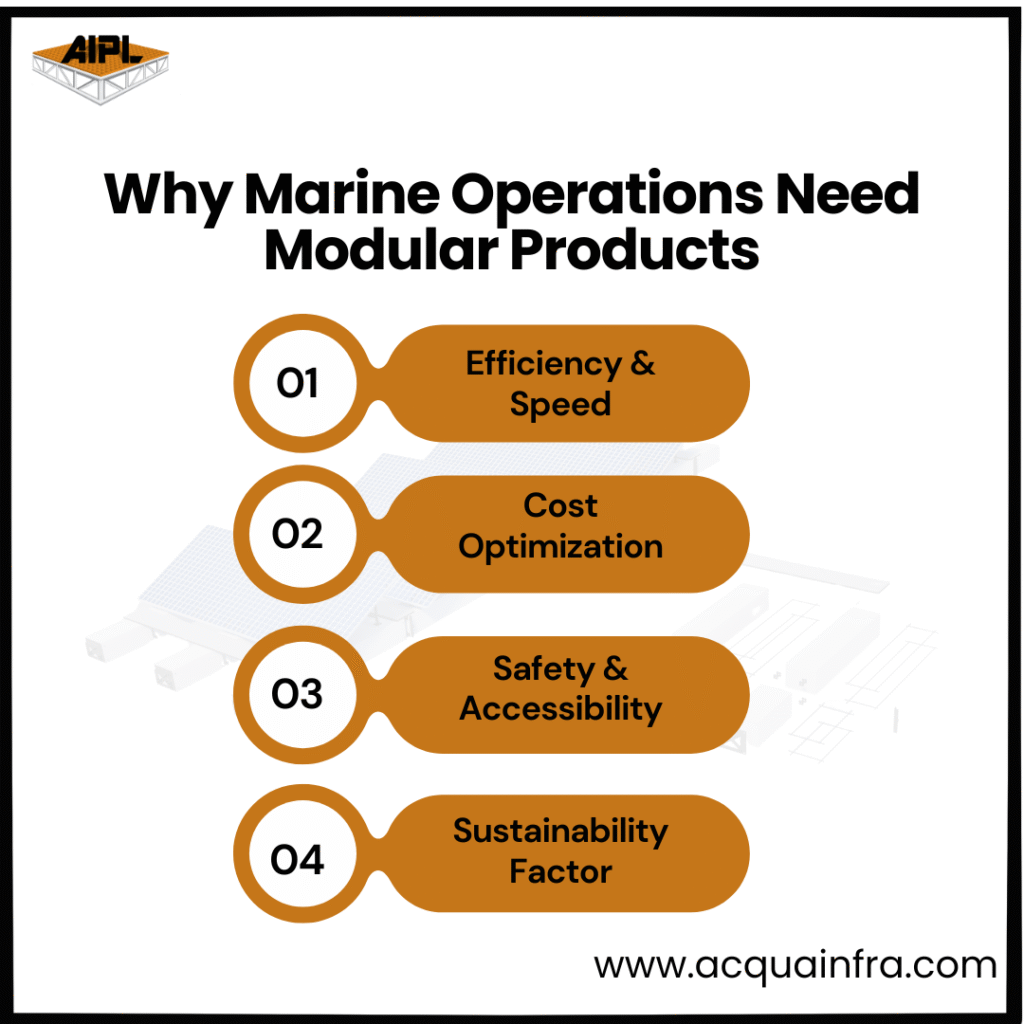
India’s inland waterways are undergoing one of the biggest transformations in decades. What was once seen as an outdated and slow transport mode is now being revived as a sustainable, cost-efficient, and scalable network for national logistics. From the mighty Ganga to the Brahmaputra, rivers are being repositioned as commercial corridors, powered by modern innovations like modular barges, floating terminals, and pontoons.
This shift isn’t just about moving goods — it’s about redefining how India connects its industries, people, and resources, with modular technology at its core.
For years, India’s vast river network remained untapped due to poor infrastructure and lack of investment. That began to change with the Jal Marg Vikas Project (JMVP) and Sagarmala Programme, both aiming to modernize inland waterway transport (IWT) systems.
Today, routes like National Waterway-1 (NW-1) on the Ganga and NW-2 on the Brahmaputra are being transformed into fully functional trade routes, complete with terminals, jetties, and navigational systems.
The results are visible —
This transformation signals a strategic shift: India is finally tapping into its rivers as economic assets, not just natural resources.
Traditional fixed marine structures have always struggled to adapt to India’s variable river conditions — fluctuating water levels, sedimentation, and limited land availability. Modular solutions are filling that gap with speed and flexibility.
Modular barges can be assembled and expanded depending on load and route. This flexibility is crucial in rivers like the Ganga, where depth changes seasonally.
In regions where permanent construction isn’t feasible, floating terminals offer a smart alternative.
This modular approach not only ensures operational agility but also reduces capital investment — a major reason why marine operators across India are adopting it rapidly.

Marine operations — whether cargo, dredging, or maintenance — demand systems that can adapt quickly to changing environments. That’s where modular products stand out.
Setting up modular pontoons or platforms is faster than building permanent structures. Operators can deploy, dismantle, and relocate them with ease — perfect for temporary or multi-location projects.
Traditional marine infrastructure involves heavy civil work and high maintenance. Modular setups cut costs dramatically:
Modular pontoons improve operational safety by providing stable, slip-resistant surfaces and easy access for machinery and workers. For dredging, cleaning, or inspection, they serve as safe, mobile workstations.
Reusable modular systems reduce material waste and emissions. They support India’s larger push toward green logistics — aligning with initiatives like Make in India and Namami Gange.
Several projects across India have showcased how modular innovation is shaping the marine sector.
These projects highlight how Acqua Infra and similar innovators are driving India’s transition toward smart, modular, and sustainable marine ecosystems.
As India expands its inland waterway network, modular products will play an even greater role. The ability to scale up quickly, adapt to terrain, and reduce environmental impact will make modular technology indispensable.
Future advancements like IoT-integrated monitoring, smart docking systems, and hybrid modular barges will further boost efficiency and reliability in marine logistics.
India’s inland waterways are not just changing — they’re evolving into living, dynamic infrastructure systems, and modularity is the foundation of this transformation.
